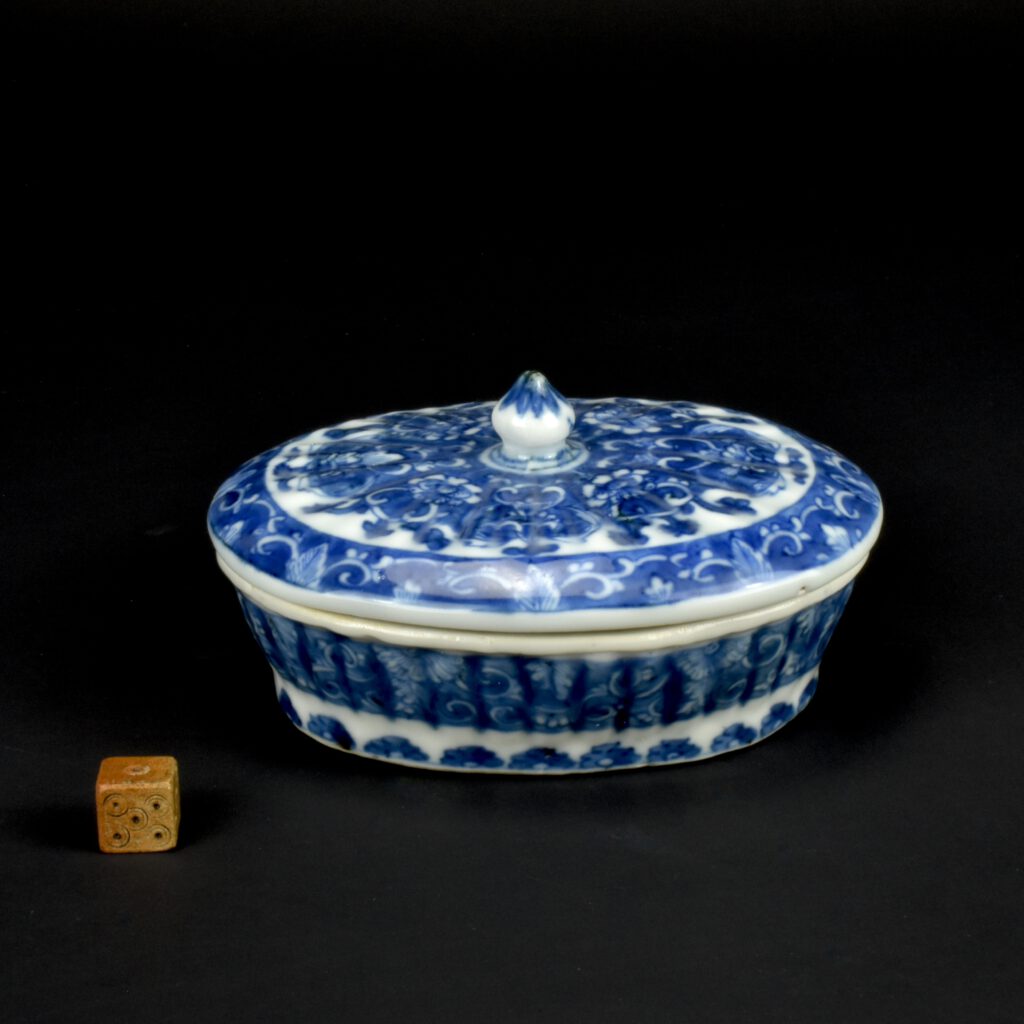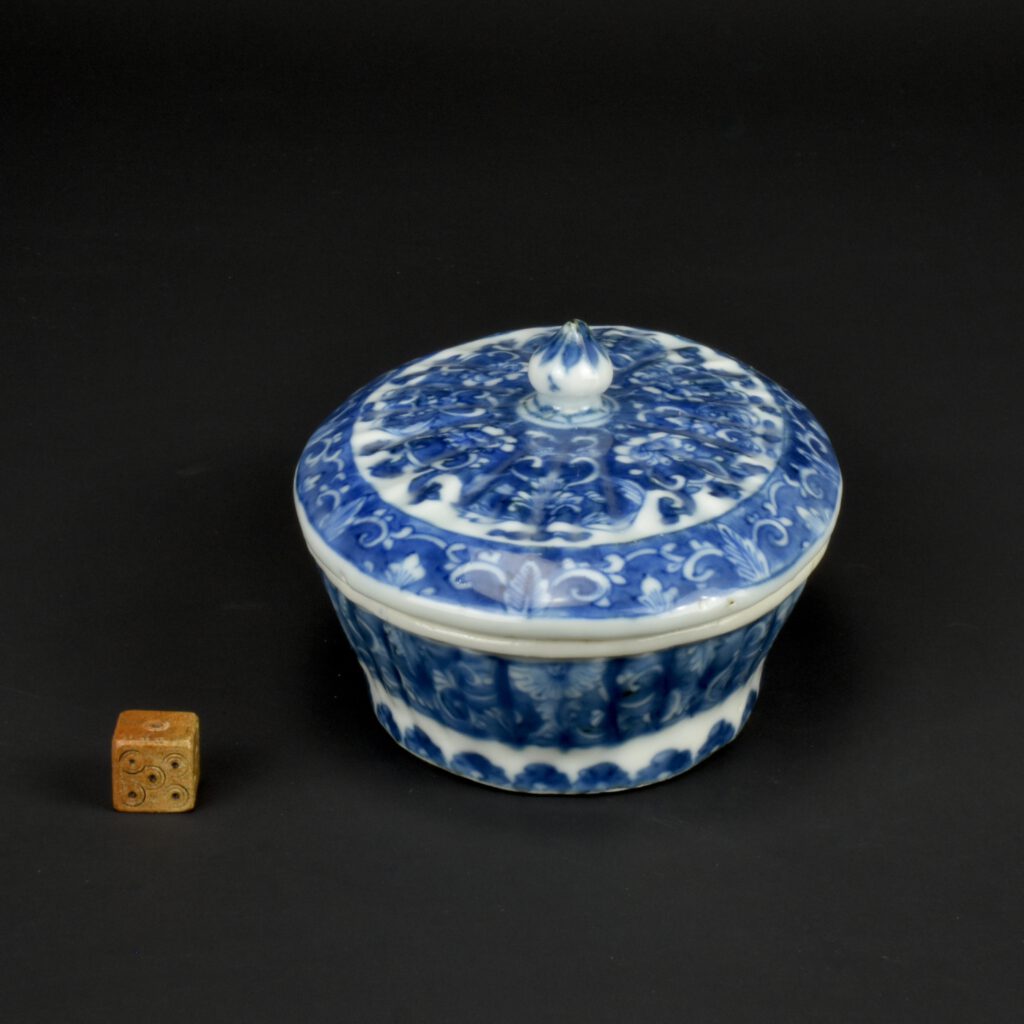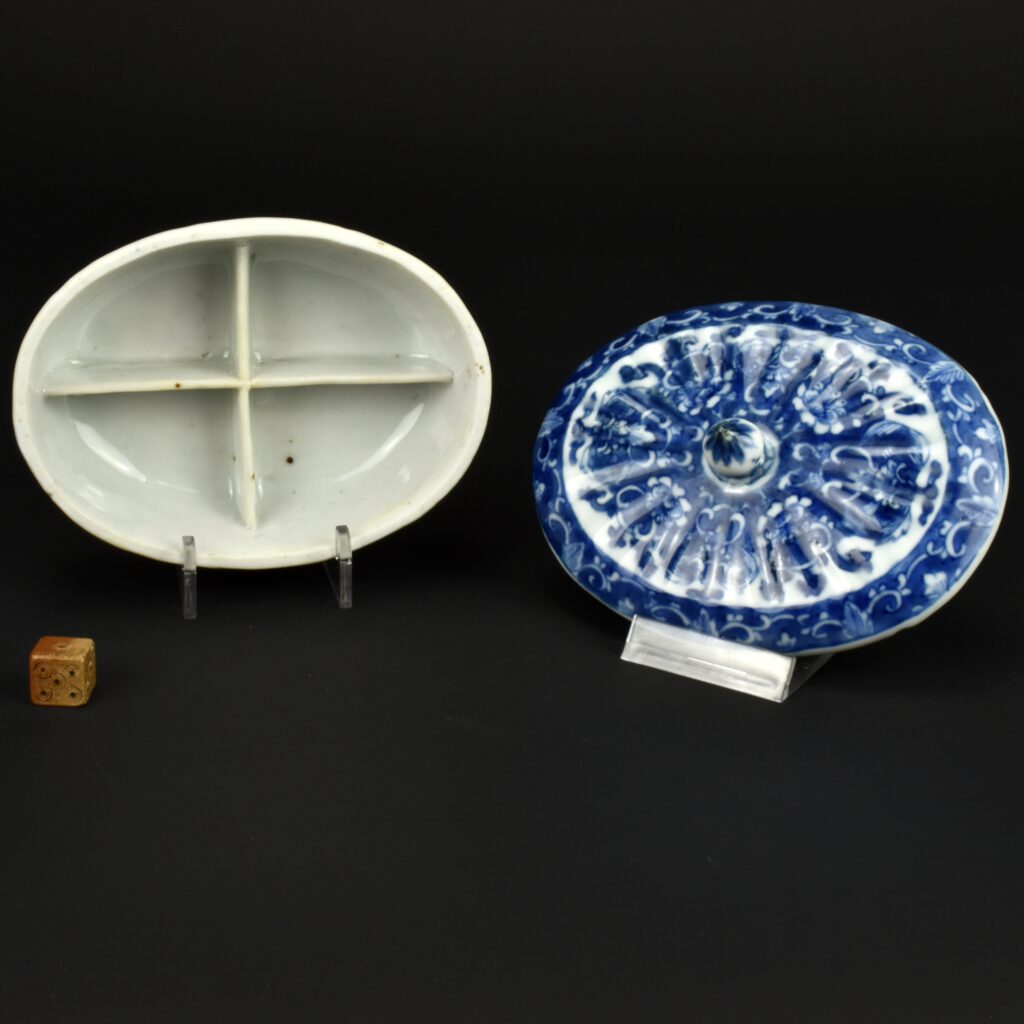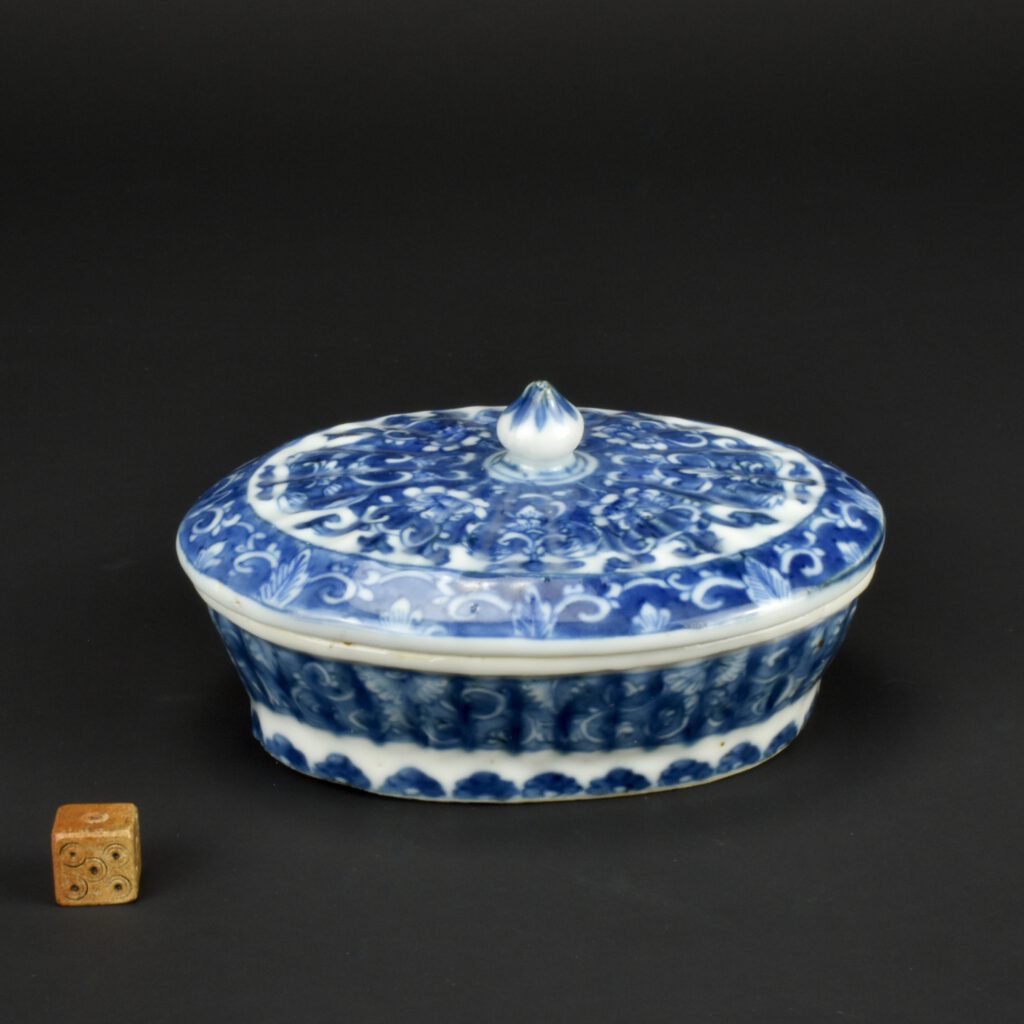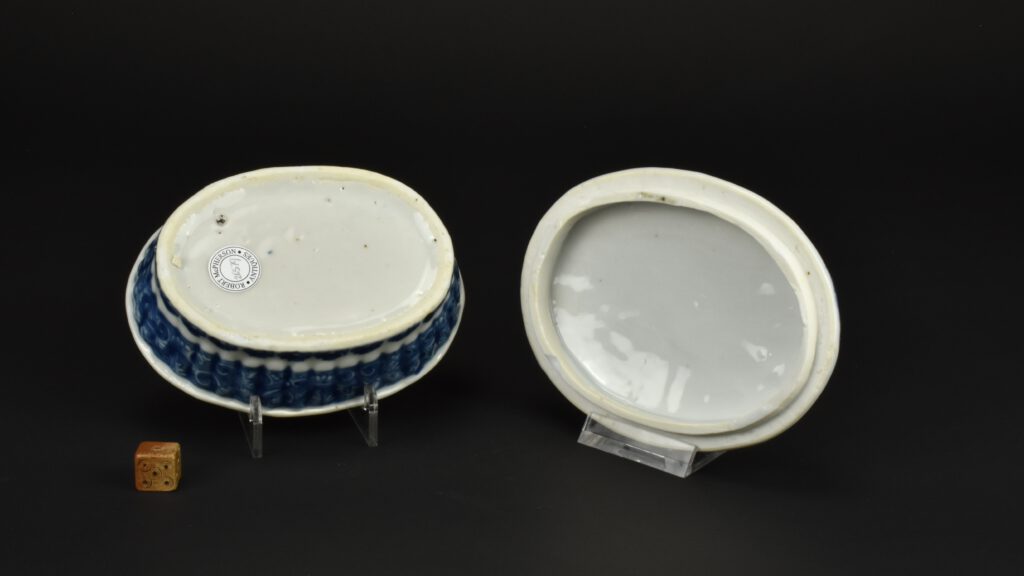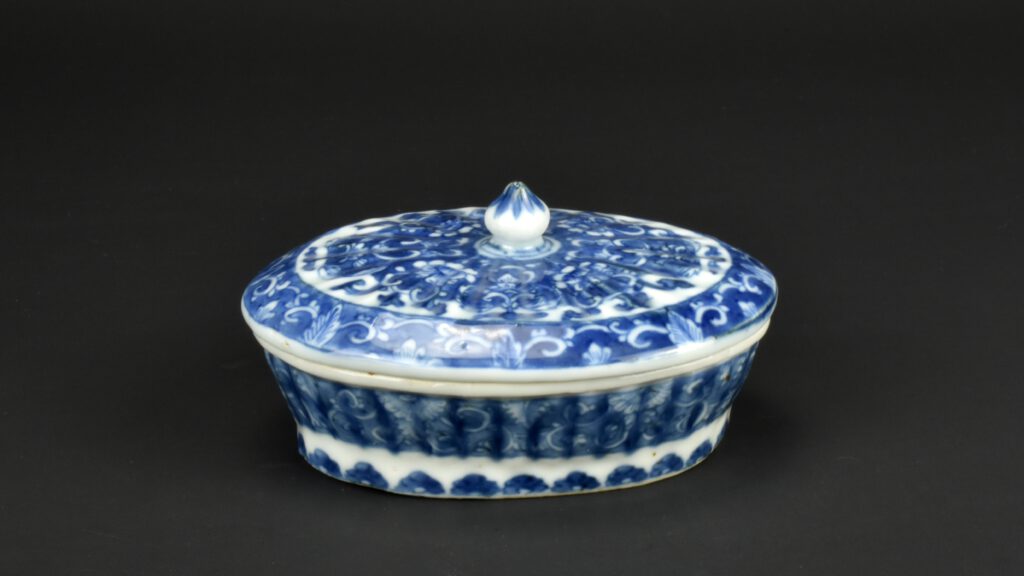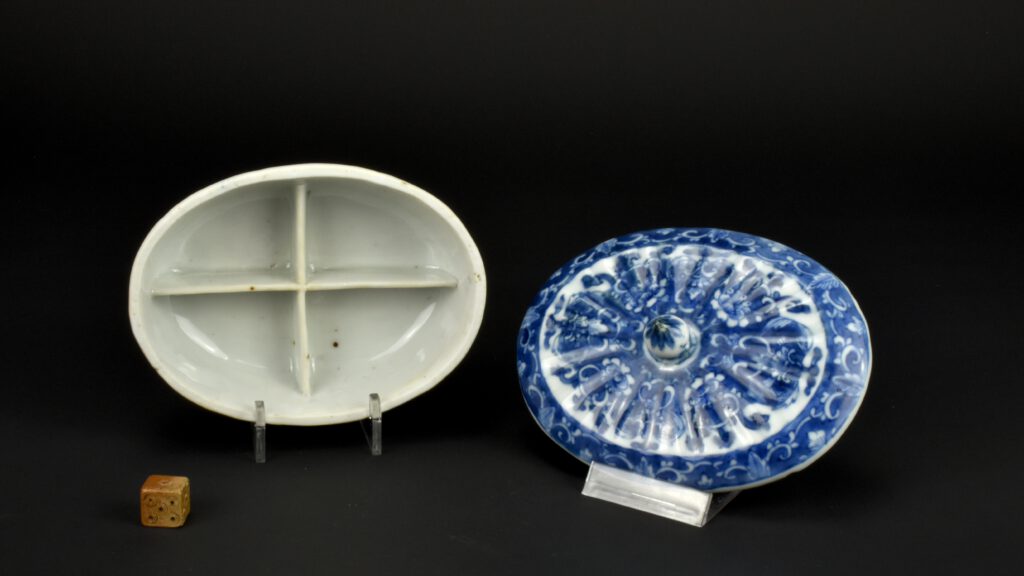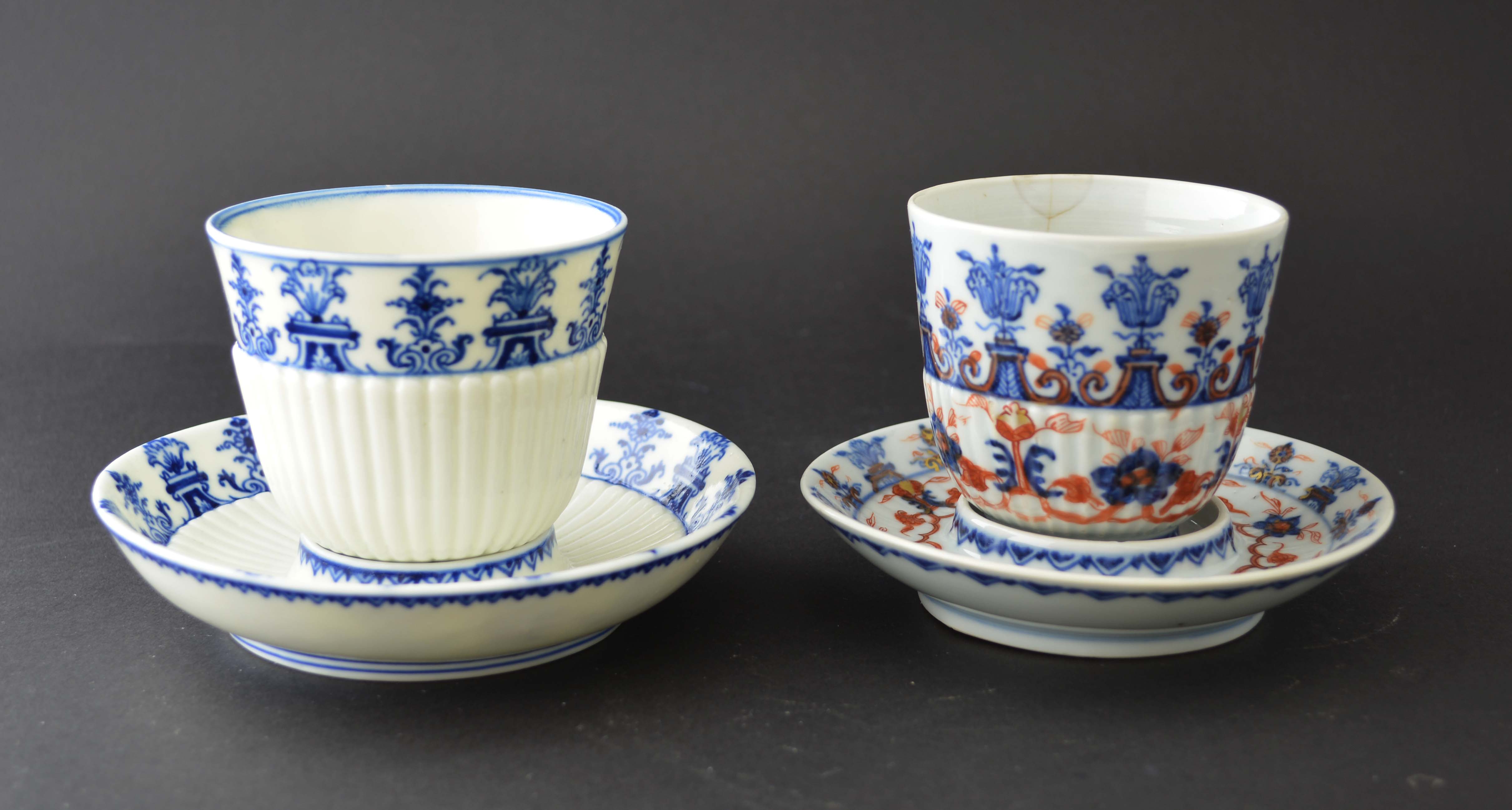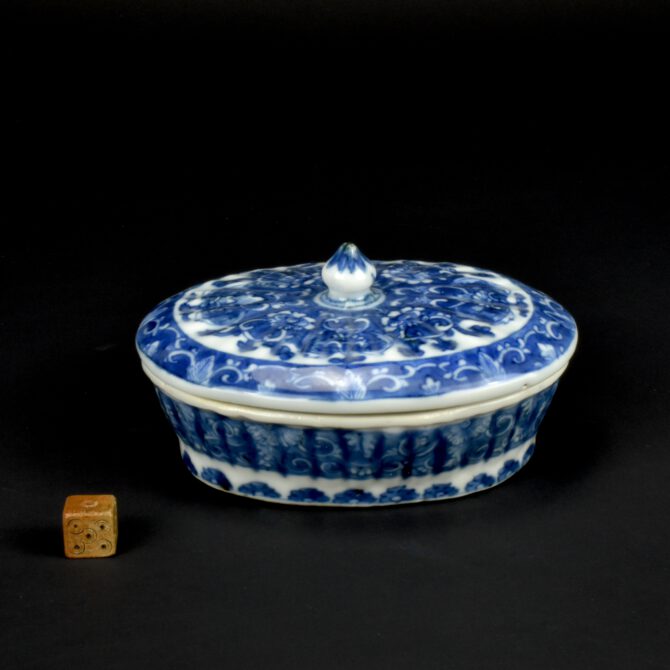
A Rare Late Kangxi or Yongzheng Chinese Export Porcelain Spice Box and Cover.
A Rare Late Kangxi or Yongzheng Chinese Export Porcelain Spice Box and Cover, Jingdezhen c.1720 – 1735. This unusual Chinese export porcelain spice box and cover was based on a French silver shape. It might have been based on St. Cloud blue and white porcelain, alternatively it might have been based on blue and white Dutch Delftware. It is known that Saint Cloud Porcelain was sent to China to be copied in hard-paste porcelain which was exported back to France. This was illustrated to us some years ago when we sold a blue and white soft-paste Saint Cloud porcelain silver shape salt and a late Kangxi or Yongzheng hard-paste copy of it. The Chinese Export Porcelain copy had a ‘face in the sun’ mark which was directly copied from the French Saint Cloud original. However, this blue and white spice box and cover is of a different style, that often occurs on Dutch Delftware as well as in French pottery and porcelain. Chinese export porcelain in this style is normally dated to the Kangxi period, it could be late Kangxi, but in my opinion, it is more likely to Yongzheng. This type of decoration occurs on Dutch Delftware and St. Cloud well into the 1730s.
See Below For More Photographs and Information.
SALE PENDING
- Condition
- In good condition.
- Size
- Width 11.6 cm (4.6 inches) Height 5.9 cm (2.33 inches)
- Provenance
- N/A
- Stock number
- 26579
Information
A European Style Kangxi Spice Box and Cover c.1690-1710.
Robert McPherson Antiques - Sold Archive 25715.
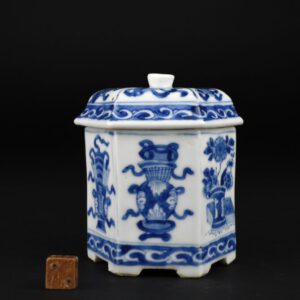
SOLD
Condition
In extremely good condition. A couple of minute frits c.1mm.
Size
Height 9 cm (3 1/2 inches)
Provenance
The Morpurgo Family Collection - This collection was formed thanks to four successive generations of the Amsterdam Morpurgo family. The first, Joseph Morpurgo, started with no experience of the world of antiques and collecting. Thereafter, each generation sought to improve the breadth of their expertise and also the quality of the works they were acquiring. The collection reflects Dutch taste of the late 19th and 20th century, it was not just a collection of oriental ceramics. It included Dutch Delftware, silver and glass.
St. Cloud Lambrequin Design :
This design is in a style traditionally related to the great Baroque designer to the French court of Louis XIV, Jean Berain (1640-1711). Berain`s style of grotesques and strap-work were used on all types of decorative art from furniture to tapestries, silverware and just about anything else. His stylistic language is based on a Renaissance understanding of a type of Roman design. However the designs one finds on St.Cloud porcelain are more linear and weightless, they are more in keeping with ornamental prints. Of the more complex designs, a few have been possible to identify from the original source material. They are not taken from Berain designs but from the etchings of a prolific architect Jacques Androuent Du Cereau, who early in his life spent time working in Italy (in the 1530`s). However it seems to me inconceivable that his designs would have been used in the early 18th century unless Berain and his grotesque style were so popular. Both are interpretations of Classical Roman design but from different generations.
Robert McPherson Antiques - Sold Archive.
An Original St. Cloud Beaker and Saucer of the Same Design (24803)
Together with the Chinese copy stock number (24721).
